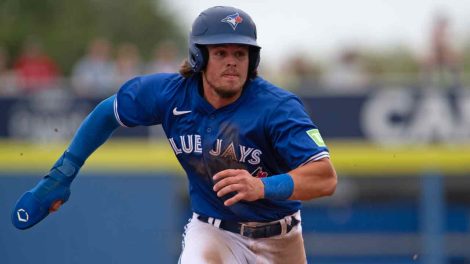Permit me at the outset to unfurl my biases about pitching:
- If a pitcher is any good, he should be a starter.
- You should give a pitcher ample opportunity to be a starter before you relegate him to the bullpen.
- The bullpen is a fine place to give a young pitcher his introduction to the big leagues, but two seasons is the longest that a pitcher should be relegated to that role, lest you squander his potential.
With that in mind, consider that Aaron Sanchez currently sits 22nd amongst pitchers in FanGraphs’ calculation of wins above replacement. That places him ahead of Jacob deGrom, Max Scherzer, Jordan Zimmermann, and yes, David Price.
In the conversation that has emerged over the past week around the timing of Sanchez’s possible relegation to the bullpen, it seems as though some – in remaining religiously observant to rules of thumb around young pitchers’ workloads – have lost sight of just how well Sanchez has pitched.
Unfortunately, since the Blue Jays first introduced Sanchez to the big leagues in 2014 as a reliever, and because his outrageous stuff played so well in short, late-inning stints down the stretch last season, some people can’t wait to send Sanchez to the bullpen. With John Gibbons seemingly being chief amongst them.
For those of us who would prefer for the Blue Jays’ predisposition to be to find ways to keep Sanchez in the rotation, the equivocation around the topic by Mark Shapiro and Ross Atkins thus far has been welcome. In his jovial appearance at Pitch Talks, Atkins walked back the notion that there were strict innings limits in place, and that Sanchez was doomed to middle relief by year’s end.
Given that, Gibbons’ offhandedly assured comments to ESPN’s Buster Olney with regard to the inevitability of Sanchez’s reduced role sounded jarringly off-key. On some level, you could be left to wonder if Gibbons’ enthusiasm for such a move isn’t predicated on the lack of reliable options that he currently has at his disposal in the bullpen.
Knowing that the management of pitchers in-game is the most obvious manner in which MLB managers are judged in the heat of the moment, you couldn’t blame him for wanting someone who inspired more belief than Joe Biagini in a high-leverage situation.
But then, you wouldn’t stash Max Scherzer in the bullpen just because you lacked confidence in Jonathan Papelbon.
Beyond the in-game situations, there is a prevalent school of thought that this is a matter of preserving Sanchez for the longer term. But count me among those who bristle at the strict adherence to rules of thumb when it comes to managing the workloads of young pitchers.
There are certainly cautionary tales from the not-so-distant past of how increases of year-over-year innings could be detrimental to a pitcher in the long-term, with the likes of Mark Prior and Ben Sheets suffering career-altering injuries.
Pitchers will always be at risk of injury, simply because the act of hurling horsehide is a repetitive motion that is a biomechanical nightmare for the human body. If a cyborg like Roy Halladay can break down, then injuries are coming for just about everyone who toes the rubber.
That said, it’s also worth remembering how far sports medicine has evolved over the past decade and a half. But throughout the game, almost no one would persist in pushing young pitchers in the same manner they did even just ten years ago. The rationale that pitchers used to throw 300 innings per season is only espoused by the lunatic fringe.
The point being, we’re already cautious enough. And there are limits to the degree that caution will avert injury.
Moreover, the Sanchez that we’re watching this year carries a different body to the mound. After lat injury derailed his 2015 season as a starter, Sanchez returned with a bulkier, fitter build and a mindset that seems more attuned to his physical state.
Just as importantly, last year’s injury wasn’t to a shoulder or elbow, which would have raised many more red flags.
This isn’t to say that the Jays should grind Sanchez’s muscles, joints and ligaments into a fine powder just to see how far they can push him, or because they need him at any cost. But the default should be to keep Sanchez in the rotation so long as he remains healthy and effective.
The effectiveness should be evident to all, and if in the coming month, Sanchez seems overly fatigued or unable to maintain his control, then fine, make the move.
As for health, one hopes that Sanchez’s new and profound engagement with his physical state would allow him to be honest with the team if he felt pain or fatigue. But even failing this, the Jays could give him extra rest as required.
A move to the pen in the near term for caution’s sake does little to help the Blue Jays’ chances this year, and sets a dubious precedent for starters to come. Establishing a three-to-four season escalation of innings for the sake of preserving pitchers for some unknown date down the road means the Jays would always be scrambling to constitute a rotation. There is no current model for yearly contention that incorporates such a plan.
For how many more years are we prepared to put Sanchez into limbo in terms of his role? And are you ready to perpetuate this conversation around Roberto Osuna through the 2019 season? Can the Blue Jays even afford to do this?
Sanchez is an important long-term piece for the Blue Jays, but he’s equally important to their chances of getting back to the playoffs in 2016.









